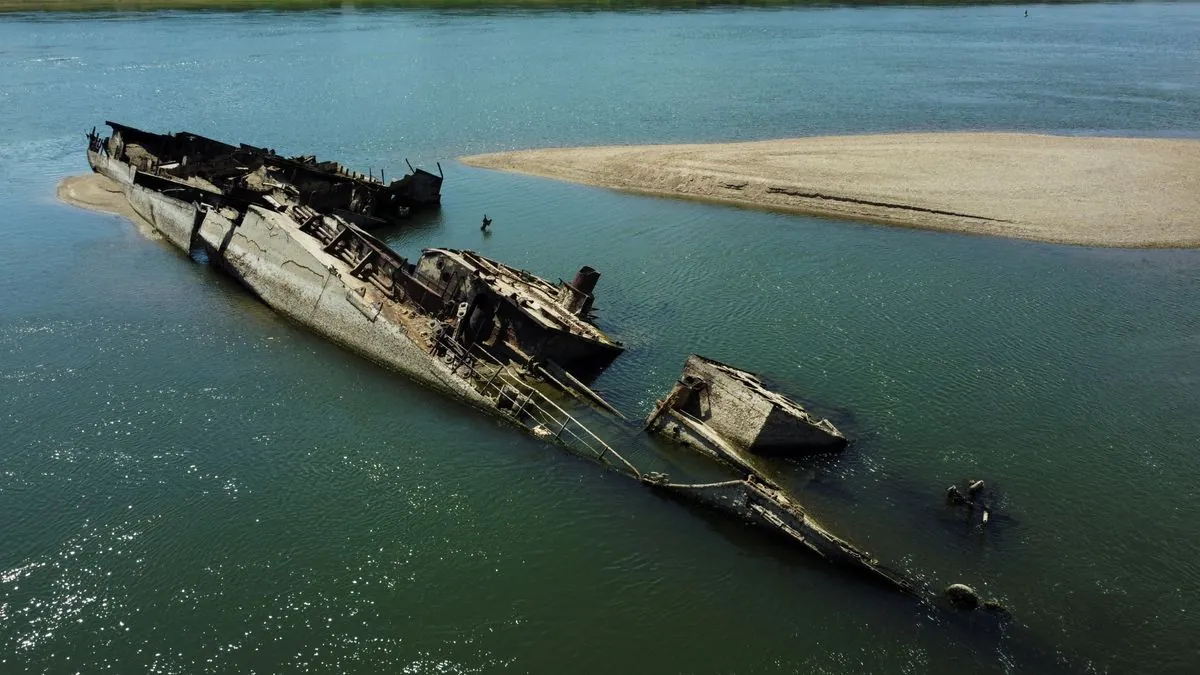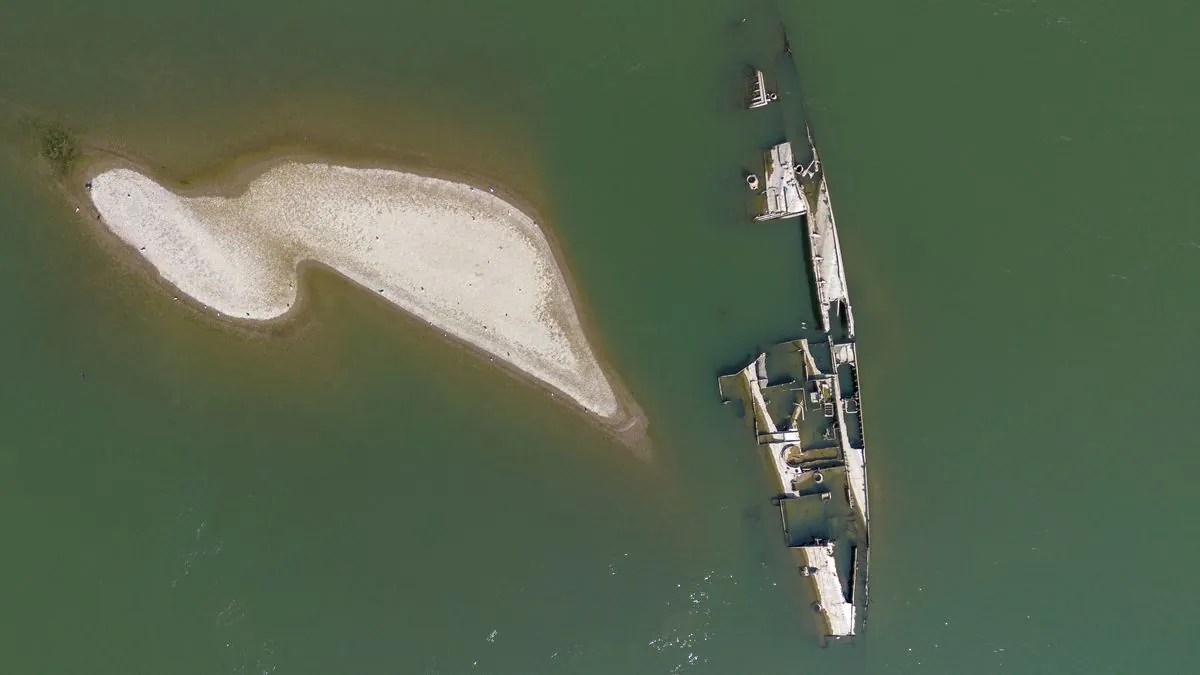Drought Unveils Nazi Shipwrecks in Danube, Highlighting Climate Crisis
Severe drought in Eastern Europe has revealed sunken Nazi ships in the Danube River. The wrecks, dating back to World War II, emerged near Prahovo, Serbia, and Mohacs, Hungary, as water levels dropped dramatically.

The ongoing drought in Eastern Europe has led to a significant drop in water levels along the Danube River, revealing remnants of World War II history. Near the Serbian town of Prahovo and Hungary's Mohacs, sunken Nazi vessels have emerged from the receding waters, offering a stark reminder of the past and the present climate crisis.
In Prahovo, several ships from Nazi Germany's Black Sea Fleet, scuttled in 1944 during their retreat from advancing Soviet forces, have become visible. These vessels, part of hundreds deliberately sunk, now pose potential hazards to river traffic. The wrecks display various features, including turrets, command bridges, and twisted hulls, while others remain partially submerged under sand banks.
At the Danube-Drava National Park near Mohacs, four pre-1950 vessels have surfaced. Endre Sztellik, a park guard, noted the deteriorating condition of one ship, stating, "We still don't know what this is exactly. What is visible and an unfortunate fact is that the wreck is diminishing as people are interested in it and parts of it are going missing."

The Danube's water level stood at a mere 1.5 meters on September 10, 2024, in Mohacs, while Budapest recorded 1.17 meters. These figures are alarmingly close to the all-time low of 0.4 meters set in October 2018. For context, during floods, the Danube can rise above 6 meters.
This situation is not unique to the Danube. Poland's longest river, the Vistula, has also reached record low levels, exposing sandbanks in Warsaw and becoming so shallow that a moose was observed crossing it in a rural area.
The European climate service Copernicus has reported critical drought conditions affecting crops and vegetation across Eastern Europe. This drought is part of a broader pattern of climate change impacts, increasing the frequency and severity of such events in the region.
While the exposed wrecks offer a glimpse into history, they also highlight the urgent need for climate action. The Danube, Europe's second-longest river flowing through 10 countries, plays a crucial role in international trade and transportation. Low water levels can significantly disrupt these activities.
Interestingly, these shipwrecks, when submerged, can create artificial reefs supporting diverse aquatic ecosystems. However, their exposure threatens both their preservation and the environment they've become part of over the decades.
The drought has also impacted the Danube Delta, a UNESCO World Heritage site and vital ecological area. This region, known for its biodiversity, faces increased stress due to changing water levels and climate conditions.
Fortunately, rainfall that began on September 9, 2024, is expected to raise the Danube's levels to around three meters at Mohacs by the weekend, likely submerging the shipwrecks once again. However, this temporary relief does not negate the long-term challenges posed by climate change to the region's waterways and ecosystems.
As we witness these historical artifacts emerge from the depths, it serves as a poignant reminder of both our past conflicts and our current struggle against the changing climate. The situation calls for increased efforts in water management, climate change mitigation, and preservation of historical sites along Europe's vital waterways.


































